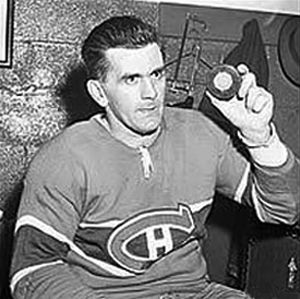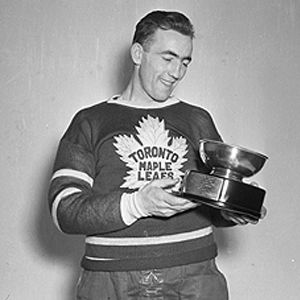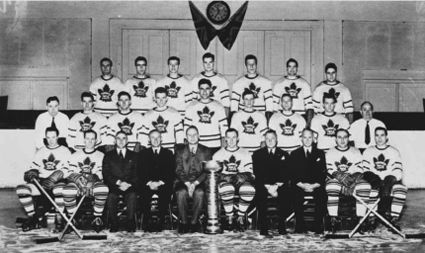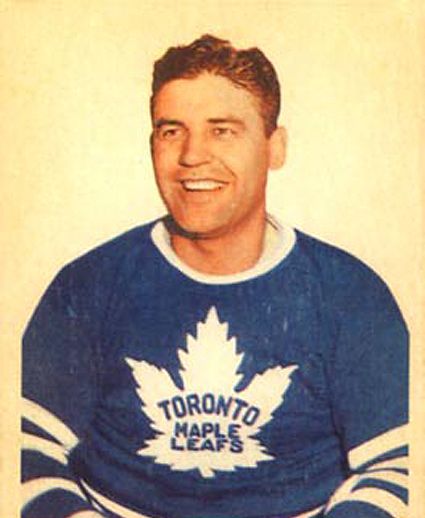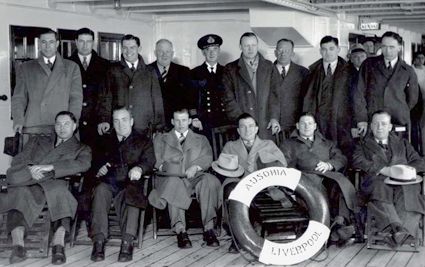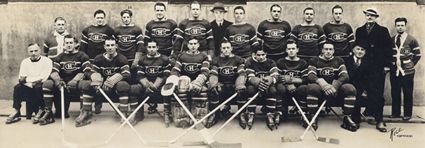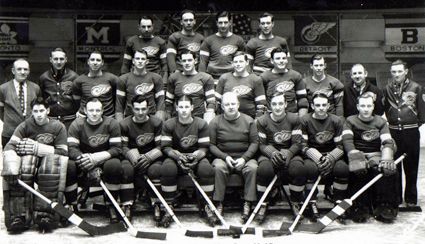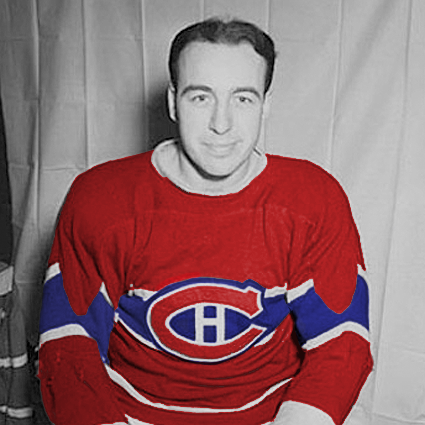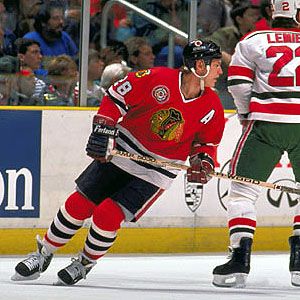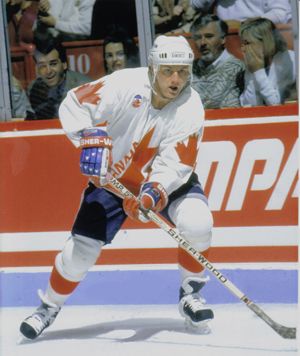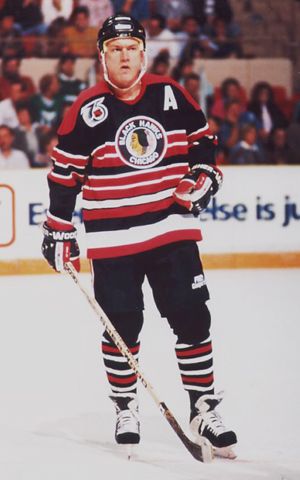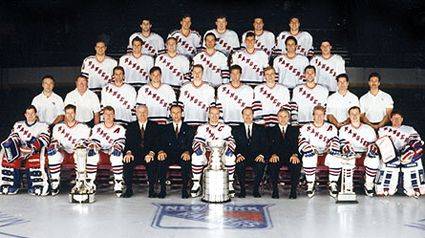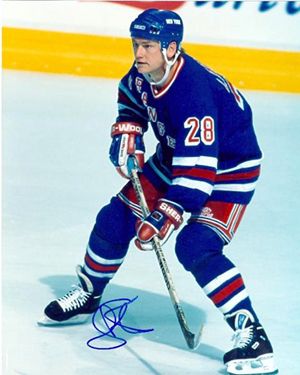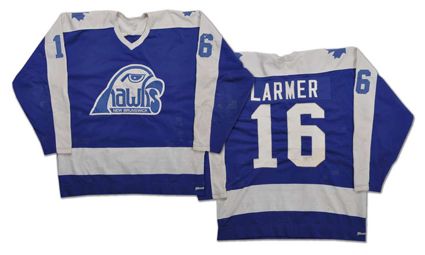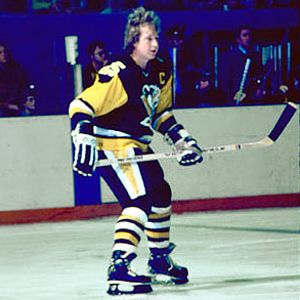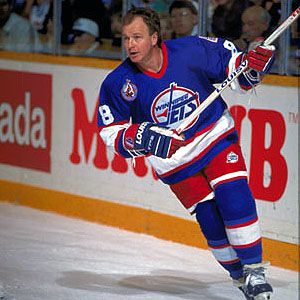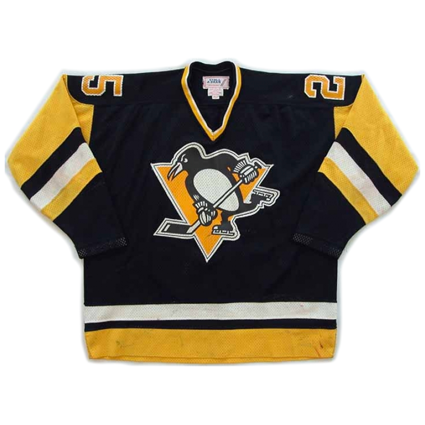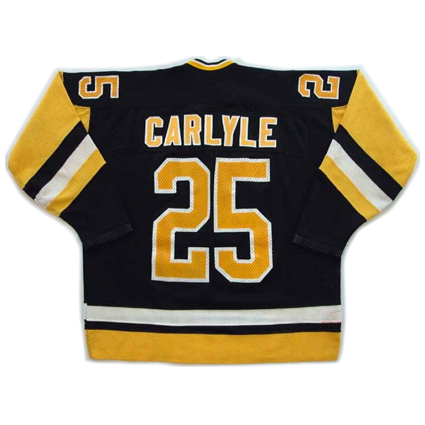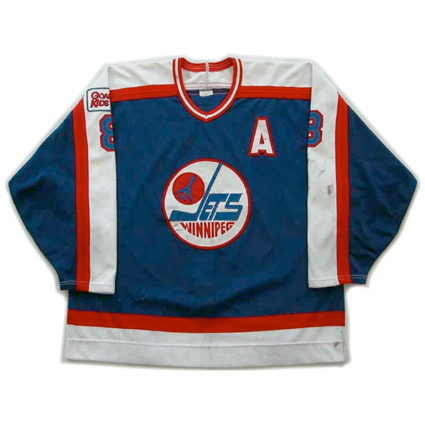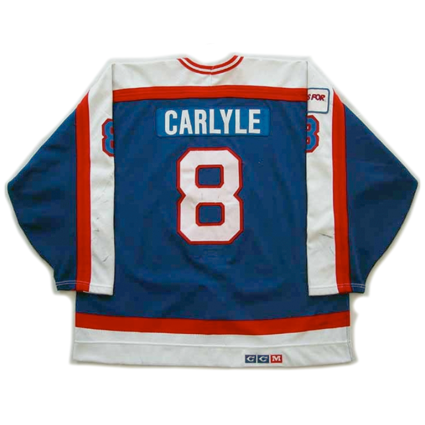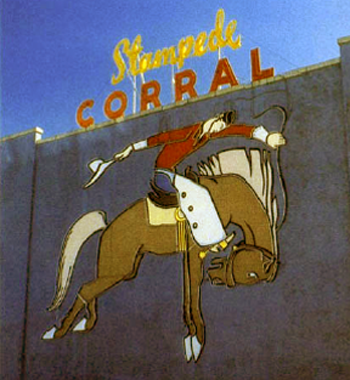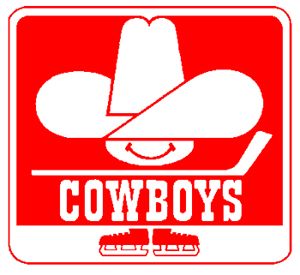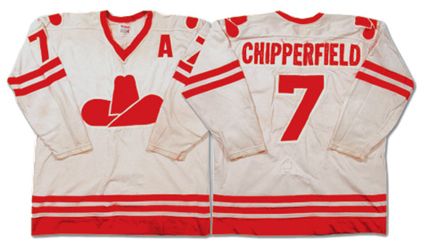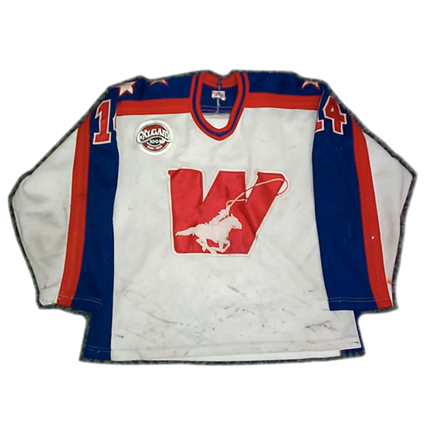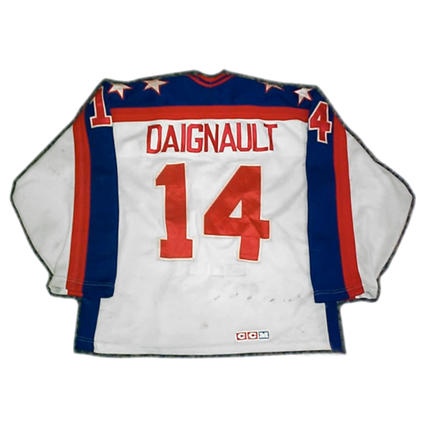Saturday, April 23, 2011
2001 Italy National Team Marco De Toni Jersey
While the 2011 IIHF World Championship in Slovakia doesn't begin until Friday, April 29th, there is plenty of international hockey action taking place this weekend.
First is the conclusion of the 2011 IIHF World Women's Championship in Switzerland. Canada and the United States both went undefeated in the Preliminary Round and received a bye into the Semifinals. Friday's games saw Finland easily defeat their Nordic rivals Sweden 5-1 to advance to face Canada, and Russia came from behind 3-0 in the third period to defeat Switzerland 5-4 in overtime for the right to face the Americans today.
After a day off on Sunday, the losing teams in today's games will meet for the bronze medal in Monday's early game with the winners meeting to determine the champion in Monday's late game. Anything other than the defending champion United States versus Canada would be a surprise considering the two countries dominate the women's game, having divided all 12 previous titles, nine for Canada and three for the US, including the last two.
On the men's side, the 2011 World Championship Division 1 Groups A and B tournaments also come to a conclusion this weekend. Division 1 is held in a single round robin format, with all teams playing each other once, with the champions simply being the teams that finish with the most points atop their group standings, while the club finishing last in each group is relegated to Division 2 for 2012.
Division 1 Group A is being held in Budapest, Hungary and features hosts Hungary along with Spain, Italy, South Korea and the Netherlands.
Heading into the final two games today, Hungary and Italy are tied at 9 points each and are scheduled to play each other today to determine which team will not only with this year's gold medal, but be awarded promotion to the Top Division to play with the big dogs at next year's World Championships in Stockholm and Helsinki.
Korea and the Netherlands both have 3 points. While the Netherlands have completed their schedule of games, Spain, with no points, has one final chance to avoid relegation when they take on Korea in today's first game.
Sadly, Japan was forced to withdraw from this year's competition due to the devastating earthquake and tsunami that mainly affected the northern part of Japan where the hockey community is mainly located. The IIHF revised the schedule to accommodate five teams, rather than the anticipated six. Additionally, Japan will retain their place in Division 1 for next season, with the club finishing last among those competing being the one relegated.
Also wrapping up their tournament is Division 1 Group B, which is taking place in Kiev where hosts Ukraine, Kazakhstan, Poland, Great Britain, Lithuania and Estonia are competing.
Heading into the final day, Kazakhstan leads with a perfect 4-0 record for 12 points. They will face hosts Ukraine, who are tied for second with Great Britain with 9 points. The British are scheduled to face Poland, who enters the final day with a 2-2 record and 6 points.
If Ukraine wins in regulation in front of their home fans and Great Britain wins as anticipated, there will be three way tie at the top of the table with all games completed, bringing the tie breaker of goal differential from games between the three tied teams into effect to determine the champion, with Ukraine needing to win by 3 goals to have a chance. Kazakhstan simply needs to reach overtime, win or lose, to claim the title and return to the Top Division.
Also currently taking place are the 2011 World Under-18 Championships in Germany. This tournament is one of the most important in the eyes of NHL teams, as these are the players they will be drafting this June in the 2011 NHL Amateur Draft. As much as the Under 20 Championships between Christmas and New Year's each year gets all the media attention, nearly every one of those players has already been drafted by NHL clubs, making the U18 tournament a vital one in the eyes of the scouts.
The Preliminary Round was completed on April 19th with the United States winning Group A over Russia and Germany. Sweden won Group B over Canada and Finland while Switzerland, Slovakia, the Czech Republic and Norway were sent to the Relegation Round.
Russia defeated Finland 5-2 in their Quarterfinal to advance to face Sweden today in the first game, while Canada set up a meeting with the United States with their 4-3 win over the Germans.
Following today's games, the losers will meet for the bronze medal on Sunday with the winners advancing to the gold medal game later the same day in front of a large group of scouts from each and every NHL organization looking for the next group of future professionals.
For more information and to follow the action today, please visit IIHF.com.
Today's featured jersey is a 2001 Italy National Team Marco De Toni jersey. Italy plays today for the gold medal in Division 1 Group A and promotion to the Top Division for next year.
This jersey was worn during the 2001 World Championships where Italy finished in 12th place, protecting their spot in the Top Division. They would finish 15th the following season which resulted in relegation to Division 1 after an 11 year stay in the top flight.
Today's video is an advance look at the 2011 IIHF World Championship Division 1 Group A in Budapest, Hungary, and is a remarkably well done and funny video.
Friday, April 22, 2011
1944-45 Toronto Maple Leafs Babe Pratt Jersey
During the 1944-45 NHL regular season, Maurice "Rocket" Richard broke Joe Malone's record for most goals in a season (44) on his way to becoming the first player to score 50 goals in an NHL season, which also established the standard of achieving 50 goals in 50 games, as the NHL schedule was then 50 games long.
Maurice Richard
Richard's teammate Elmer Lach won the scoring title with 26 goals and 54 assists for 80 points, with Richard coming in second with 73. Their linemate Toe Blake's 29 goals and 38 assists gave him 67 points, bettering the Boston Bruins Bill Cowley at 65, making it only the second time in league history that all three members of the same line finished 1-2-3 in scoring.
The Toronto Maple Leafs goaltender Frank McCool won the Calder Trophy as the league's top rookie, the third consecutive season the Calder Trophy winner came from the Maple Leafs following center Gus Bodnar in 1944 and right wing Gaye Stewart in 1943.
McCool with his Calder Trophy
Goaltender Bill Durnan of the Montreal Canadiens won the Vezina Trophy for the second consecutive season as the league's best goaltender, as his stellar 38-8-4 record gave him 14 more wins than McCool and the Detroit Red Wings Harry Lumley's 24 wins.
The final standings were clearly a case of the "haves" and "have nots", as Montreal easily led the league with 80 points, followed by Detroit with 67 and Toronto's 52. Boston qualified for the playoffs despite a poor 16-30-4 record, as their 36 points bested the Chicago Black Hawks 33 and the New York Rangers at 32.
For reasons we will never understand, the four playoff teams were not paired up with first place playing against fourth place and second place taking on third, but with the first overall club from the regular season hosting the third place finisher while the club finishing in second place drew the weakest qualifier from fourth place!
In the First Round of the playoffs, Toronto took the first two games in Montreal, with McCool outdueling Durnan in Game 1 to win 1-0 and following that with a 3-2 win. Montreal won Game 3 in Toronto 4-1 before Toronto put Montreal on the brink of elimination with a 4-3 win in overtime of Game 4 in Toronto.
The series moved back to Montreal for Game 5, where the Canadiens pounded the Maple Leafs 10-3, but the Maple Leafs rebounded back in front of the home fans to end their rivals season 3-2 to win the series in six games 4 games to 2.
In the other series, Boston gave Detroit all they could handle. The Bruins won the first two games in Detroit 4-3 and 4-2 before the Red Wings returned the favor and evened the series by winning twice in Boston by identical 3-2 scores. The series then completely switched form, as the home team won the remaining three games. First Detroit took a 3-2 lead in games with their third consecutive 3-2 victory, this one in overtime. Then Boston forced a deciding Game 7 with a 5-3 win at home, only to have Detroit return the favor with a series clinching 5-3 win of their own back at The Olympia.
The story of the 1945 Stanley Cup Finals was the defense. For the first time, two rookie goalies met in the finals, the 26 year old McCool and Detroit's Lumley, who was just 18 years old. McCool stonewalled the Red Wings in Game 1 at Detroit, which allowed the single Maple Leafs goal to stand, giving them a 1-0 victory.
Toronto managed two goals in Game 2, which turned out to be twice as many as they needed, as McCool again stymied Detroit on their home ice with his second consecutive shutout. Game 3 saw Lumley do just about all he could to keep the Red Wings in the game, but for the third consecutive game, McCool could not be solved and he put the Maple Leafs on the verge of a championship with yet another shutout by a score of 1-0, this time at Maple Leaf Gardens.
In Game 4 in Toronto, Detroit, who had gone 8-1-1 against Toronto during the regular season, finally solved McCool with a goal two minutes into the contest, proving to themselves that he was, in fact, human after all. Despite Teeder Kennedy's hat trick for Toronto, Detroit staved off elimination by a score of 5-3, doubling the total number of goals scored in the first three games combined.
Lumley now got on a roll and blanked Toronto back in Detroit in Game 5 by a 2-0 score before the dramatic Game 6 in Toronto. McCool and Lumley both kept clean sheets for 60 minutes and the contest entered overtime with both teams scoreless. Detroit not only stayed alive, but evened the series and denied the home fans a championship celebration when they won in overtime 1-0, giving Lumley his second consecutive shutout and the fifth one in the series six games.
The decisive Game 7 took place on this date in 1945 in Detroit with the Red Wings now on a roll, having come back from being down 3 games to none and having posted two consecutive shutouts. The game was tied at 1-1 with more than half the third period gone when defenseman Babe Pratt scored at 12:14 to give Toronto a lead McCool would protect to the end, giving the Toronto franchise it's fifth Stanley Cup championship.
The 1944-45 Stanley Cup Champion Toronto Maple Leafs
Toronto also became the first team to ever win Game 7 of the Stanley Cup Finals on the road, something that would not happen again until 1971, and to date has only happened three times following the Pittsburgh Penguins in 2009.
McCool would only play another 22 games in the NHL due to recurring health issues with ulcers, combined with the return of the Maple Leafs incumbent goaltender Turk Broda, who had already been their starting goaltender for seven seasons, from his absence due to his military service during World War II, to backstop the Maple Leafs for another six seasons.
Pratt's goal was the first time in NHL history that a defenseman would score the cup winning goal, which seemed only fitting that a defenseman would win the cup seeing how defense ruled the day with five shutouts in the series seven games.
Today's featured jersey is a 1944-45 Toronto Maple Leafs Babe Pratt jersey. This style of Toronto Maple Leafs jersey was first used in 1938 when the previous crest was replaced with this style. The lettering in the crest was changed to red for the next three seasons, before returning to this exact style with blue lettering in the crest, which would be retained through 1958.
This jersey would be revived as Toronto's choice as their Turn Back the Clock jersey for the NHL's 75th anniversary season in 1991-92. It was so well received that they redesigned their jerseys the following season to reintroduce this jerseys striping pattern and incorporate the crest as a retro style secondary shoulder patch paired with the continued use of their modern leaf as the main crest.
After being dropped in 2007 for a simpler jersey without the waist stripes for the introduction of the Reebok Edge jerseys, this basic pattern would return again this 2010-11 season with the addition of a lace up collar which was used on this jersey from 1958 to 1967.
Furthermore, a white version of this jersey would be first used in 1998-99 to commemorate the closing of their long time home, Maple Leaf Gardens. After a one year absence, the white throwback jersey would return as one of the, if not the finest alternate jerseys in league history.
Pratt would play eight seasons for the New York Rangers prior to joining the Maple Leafs for four seasons and the Boston Bruins for one. When the NHL portion of his career came to and end, Pratt would play five more seasons, mainly with the New Westminster Royals of the PCHL.
During his NHL career, Pratt would win the Stanley Cup twice, first in 1940 with the Rangers and then again with Toronto in 1945. Additionally, he would be named the winner of the Hart Trophy in 1944 as the NHL's most valuable player and inducted into the Hockey Hall of Fame in 1966.
He went on to work as both a TV analyst and goodwill ambassador for the Vancouver Canucks, who named the club's annual trophy for their best defenseman in his honor and wore a memorial patch in his memory on their jerseys after his passing at the arena during a game in 1988.
Oh. My. God.
Babe Pratt jokes with Harold Snepets at a charity softball game in 1982 when shorts were short. Really short. We mean really, really unfortunately short.
Here are the Canucks receiving their 2011 awards, including past winner of the award Snepts, wearing thankfully longer pants this time around but a nearly as hideous retro jersey, presenting the Babe Pratt Award to Christian Ehrhoff.
Labels:
Pratt Babe,
Toronto Maple Leafs
Thursday, April 21, 2011
1937-38 Montreal Canadiens Toe Blake Jersey
Following the conclusion of the 1937-38 NHL season, the Montreal Canadiens and Detroit Red Wings became the first ever NHL teams to play in Europe when they travelled across the Atlantic for a series of nine games over a span of three and a half weeks.
The Red Wings pose for a photo during their Atlantic crossing
The first game was played on this date at Earl's Court in Central London, England. Montreal's Toe Blake scored the game winning goal in overtime to give the Canadiens a 5-4 win in front of 8,000 fans.
The two teams then traveled to the south coast of England for a game two nights later in Brighton, England. This time overtime did not settle the battle and the game ended tied at 5-5.
Following the game in Brighton, the clubs crossed the English Channel and made their way to Paris, France for a trio of games over the course of five days. While the Red Wings managed to score eight goals against Montreal, the Canadiens prevailed when they reached double digits to win the game 10-8.
The 1937-38 Montreal Canadiens
Two nights later, on April 27, Detroit came out on top for the first time on the tour when they defeated Montreal by a score of 4-3.
The final game in Paris took place on April 29, 1938, which went the way of the French Canadiens 7-5.
“The professional ice hockey players of the two teams in Paris are a fine lot of players. Next week the two teams are scheduled to play in London and the hockey enthusiasts of the big city will see the fastest competition game played by humans as it should be played. It is really thrilling to witness ice hockey such as we have seen played in Paris by the Montreal Canadiens and Detroit Red Wings.” wrote sportswriter Sparrow Robertson of New York Herald Tribune.
Following their game on the 29th, the teams took their time for some sightseeing, as they were not scheduled for another game until May 5th, six days later for a return engagement at Earl's Court in England. That contest proved to be the fourth win for Montreal in six games when they won the game by a three goal margin, 6-3.
The two teams then returned to Brighton on May 7th where Detroit won the game by the largest margin of the tour when the defeated Montreal by a score of 10-5.
The 1937-38 Detroit Red Wings
Oddly, the teams then returned to Earls Court for a third time on May 10th, won by Montreal 5-4 before traveling yet again to Brighton for a third game there, where Detroit closed out the tour with a 5-2 win rather than travel to a different, larger city in England, such as Birmingham, Manchester or Liverpool.
It would be another 21 years before the NHL would return to Europe when the Boston Bruins and New York Rangers would visit England, Switzerland, France, Belgium, Germany and Austria on an epic 23 game, 26 day trek around the continent that would have today's modern player howling in protest at the mere suggestion of such a grueling schedule after the conclusion of the NHL regular season.
Perhaps the players in 1959 did protest vociferously, as the teams from the NHL would not play another game outside of North America until 1976 when the Washington Capitals and Kansas City Scouts played four games in Japan, and they would not return to Europe until 1980 when the Capitals and Minnesota North Stars competed in a tournament against the Swedish clubs Djurgarden and AIK in Stockholm.
Other games would take place in Sweden in 1981, the Soviet Union in 1989 and 1990, Germany and Austria in 1990, a return to England in 1992 and 1993, the first NHL appearance in Finland in 1994 before the first NHL games to count in the regular season standings when the Mighty Ducks of Anaheim and the Vancouver Canucks opened the season with a pair of games in Tokyo, Japan in 1997.
Exhibition games in Europe continued, as did the season openers in Japan on two more occasions in 1998 and 2000 prior to the opening games of the season taking place in Europe, which began in 2007 in London and is now an annual occurrence, mainly taking place in Sweden and Finland, but games have been scheduled for the Czech Republic and Germany as well.
Today's featured jersey is a 1937-38 Montreal Canadiens Toe Blake jersey as worn when Blake scored the game winning goal in overtime of the first game between NHL teams outside of North America on this date in 1959.
This jersey pre-dated the arrival of sleeve numbers on their sweaters, which did not arrive until 1958 with the advent of television.
Today's video is the from the return of the NHL to England for the 2007-08 season, the first ever regular season games held in Europe.
Labels:
Blake Toe,
Montreal Canadiens
Wednesday, April 20, 2011
1991 Team Canada Steve Larmer Jersey
Beginning his junior career with his hometown Peterborough Petes in 1977-78, Steve Larmer then became a member of the Niagara Falls Flyers for the 1978-79 season. He more than doubled his 41 points from the previous season with 84. That total jumped to 114 in 1979-80 after which Larmer was drafted in the 6th round by the Chicago Black Hawks. He returned for one final season with Niagara Falls during which he scored 55 goals and 133 points.
At the conclusion of the Flyers season, Larmer made his NHL debut with the Black Hawks for four games at the end of the season, scoring his first NHL point with an assist. Chicago assigned him to the New Brunswick Hawks of the AHL where he averaged more than a point per game with 82 in 74 games, good for second on the club. New Brunswick would not only win their division, but defeat Adirondack, Nova Scotia and Binghamton on their way to the Calder Cup championship. Additionally, Chicago called him up for three NHL games during the season.
For the 1982-83 season, Larmer made the Black Hawks roster out of training camp and immediately established himself as an NHL regular, playing in all 80 of Chicago's games on a line with Denis Savard and Al Secord, which led to him scoring an impressive 43 goals and 90 points on his way to being named the recipient of that season's Calder Trophy.
The following season Larmer again played in all 80 games for Chicago, a feat he duplicated again and again and again over the course of five seasons as his consecutive games streak reached 400, all the while producing an amazingly consistent offensive output, as his point totals were always between 75 and 90 points each of those seasons.
His games played streak continued to march on unabated as well as his offensive production. Now named one of Chicago's assistant captains, he narrowly missed equalling his career best of 90 points with 89 in 1987-88, and after scoring 87 the next season reached 90 once more in 1989-90 thanks in part to a career best 59 assists as his consecutive games streak now reached 640. During the playoffs, his eight consecutive postseason in a row, Larmer tied for the team lead in scoring with 22 in 20 games as the Blackhawks reached the conference finals. (Of note, Chicago formally changed their name from "Black Hawks" to "Blackhawks" with the start of the 1986-87 season.)
Showing no signs of slowing down, Larmer set a career high with 101 points in 1990-91 to lead Chicago in scoring for the third consecutive season as he registered second highest goal total of his career with 44, just two back of the 46 he tallied in 1984-85, as well as 57 assists.
Following Chicago's early exit from the playoffs, Larmer skated for Team Canada at the 1991 World Championships, scoring 8 points in 19 games. Later that same year, he competed for Canada again at the 1991 Canada Cup tournament in August prior to the start of the NHL season where he led all players in goals scored with 6, including the game winner in the decisive final game, and finished second in points with 11 in eight games.
Over the course of the next two years, Larmer extended his games played streak by playing in all 80 of Chicago's games in 1991-92 despite losing 16 pounds due to an ulcer, and then 84 in 1992-93 thanks to a newly expanded schedule which included the short-lived experiment of teams playing a pair of regular season neutral site games. It was the highest scoring regular season in NHL history at the time, but the Blackhawks were one of only two teams to allow less than three goals per game, thanks in part to Larmer's noteworthy defensive contributions.
After 13 seasons with Chicago, including playing in every game for 11 consecutive seasons, 884 games in a row, Larmer sat out training camp in 1993, demanding a trade from Chicago, citing a need for a "change of scenery", and threatened to retire if a trade was not worked out.
Eventually, after missing the first month of the season and ending his streak 30 games behind second place Gary Unger and 80 behind record holder Doug Jarvis, Larmer was traded to the New York Rangers in early Novemer. At the time of his departure from Chicago, Larmer ranked #3 all time in goals, #5 in assists and #4 in points.
Playing in his first game the day after the trade, Larmer scored his first goal as a Ranger. In early January, Larmer missed the first games of his career due to injury, sitting out three games with a broken hand. In all, he competed in 68 games for the Rangers and contributed 60 points. During the playoffs, his 12th of 13 consecutive years in the playoffs, he was a solid contributor to the Rangers eventual Stanley Cup championship, the first of his career and the Rangers first in 54 years.
In the lockout shortened 1994-95 season, milestones arrived in the form of his 1,000th NHL point on March 8 and his 1,000th NHL game on this date in 1995. He would finish the season with 1,006 games played, 441 goals and 571 assists for 1,012 points prior to retiring due to chronic back pain.
Today's featured jersey is a 1991 Team Canada Steve Larmer jersey as worn during the 1991 Canada Cup, one of only two appearances for Larmer for Team Canada during his career, both of which came during a four month span in 1991, which resulted in a silver followed by a gold medal.
The half maple leaf design of the jersey mimics the shape of the Canada Cup trophy, which clearly was not a "cup" in the traditional sense like the NHL's Stanley Cup.
photo courtesy of Classic Auctions
Bonus Jersey: Today's bonus jersey is a 1981-82 New Brunswick Hawks Steve Larmer jersey from the only minor league season of Larmer's entire career during which his club captured the league championship.
The jersey follows the design of the Toronto Maple Leafs jerseys of the time period, down to the Maple Leaf logos on the shoulder, as the Hawks shared their affiliation with both the Maple Leafs, who inspired their look, and the Black Hawks, who provided the inspiration for their name in a unique combined identity.
The franchise existed from 1978 to 1987, which included two name changes.
photo courtesy of Classic Auctions
Today's videos begin with the conclusion of the 1991 Canada Cup. Larmer scored the game winning goal and was MVP of the game.
Another highlight of Larmer's career was Larmer's Stanley Cup championship in 1994 with the Rangers.
Labels:
Canada,
Larmer Steve,
New Brunswick Hawks
Tuesday, April 19, 2011
1980-81 Pittsburgh Penguins Randy Carlyle Jersey
Born on this date in 1956, Randy Carlyle played his junior hockey for the Sudbury Wolves in 11974-75 and 1975-76, where he scored 79 points in 60 games as a defenseman which led to him being drafted by the Toronto Maple Leafs 30th overall in the 1976 NHL Amateur Draft. Carlyle was also taken 7th overall by the Cincinnati Stingers in the 1976 WHA Amateur Draft.
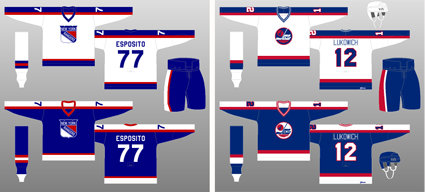
In a messy legal affair, the Stingers claimed to have signed Carlyle before he signed with the Maple Leafs, which Carlyle denied having done. The Stingers took the matter to court, and when all was settled, Carlyle became property of the Maple Leafs and divided his 1976-77 season between the Dallas Black Hawks of the CHL (26 games) and Toronto (45 games).
The next season was a virtual repeat, as he played 21 games in Dallas and 49 games with the Maple Leafs, which included scoring his first NHL goal. After two seasons with the Maple Leafs, in which he played in 94 games and scored 18 points, Carlyle was traded to the Pittsburgh Penguins, who proved to be a great fit for him, where he immediately found plenty of playing time (70 games), which allowed him to score 13 goals and 78 points during his first season with the Penguins.
Two seasons later in 1980-81, Carlyle would set career highs with 16 goals, 67 assists and 83 points. He also nearly doubled his previous high in penalty minutes with 136. His play that season would be recognized by being named the recipient of the 1981 Norris Trophy as the league's best defenseman.
He would be rewarded by being named team captain and backed up his previous season's scoring totals with 75 points and 131 penalty minutes. Carlyle would play two more seasons with the Penguins until being traded to the Winnipeg Jets for a 1st round draft pick late in the 1983-84 season.
He settled in with the Jets in 1984-85 with 71 games and 51 points and would maintain a steady presence on the Jets blueline for the next four seasons, playing between 68 and 78 games, scoring between 42 and 59 points. His role would change beginning with the 1989-90 season for the final four seasons of his NHL career, as his game was now focused much more on defense as his powerplay time dwindled, causing a resultant drop in his offensive numbers.
All told, Carlyle would play ten seasons for the Jets, which included being named a team captain for 1989-90 and 1990-91. Over the course of his 17 season NHL career, he would play in 1,055 games while scoring 148 goals and 499 assists for 647 points while amassing 1,400 penalty minutes.
Since retiring as a player, he moved into team management and coaching, including winning a Stanley Cup in 2007 as head coach of the Anaheim Ducks.
Today's featured jersey is a 1980-81 Pittsburgh Penguins Randy Carlyle jersey as worn during Carlyle's Norris Trophy winning season.
Halfway through the previous season the Penguins changed from their previous navy and columbia blue jerseys to new black and gold jerseys to align themselves with the successful Pittsburgh Pirates baseball and Pittsburgh Steelers football clubs, as the Pirates had won the World Series in 1979 while the Steelers were Super Bowl champions in 1974, 1975, 1978 and 1979, both while wearing black and gold, the colors of the flag of the city of Pittsburgh.
Bonus Jersey: Today's Bonus Jersey is a 1987-88 Winnipeg Jets Randy Carlyle jersey. While Carlyle only played for three different teams, his longevity resulted in him wearing a number of different sweaters during his career, as he was present in Pittsburgh during the change from their navy blue jerseys to their adaptation of their black and gold jerseys and later their gold alternate jerseys.
Then while in Winnipeg, the club changed from their NHL debut style jerseys with the full length arm striping to their final design with it's modernized logo for their final six seasons.
This particular style jersey was instituted by John Ferguson, who came to the Jets from the New York Rangers, where they had used the same exact striping pattern during the 1976-77 and 1977-78 seasons before reverting back to their traditional sweaters with the diagonally lettered "Rangers" cresting.

Today's video section begins with an interview with Carlyle from 1980.
Next, a more recent profile of Carlyle while coach of the Anaheim Ducks.
Labels:
Carlyle Randy,
Pittsburgh Penguins,
Winnipeg Jets
Monday, April 18, 2011
1982-83 Calgary Flames Kent Nilsson Jersey
When the Flames relocated from Atlanta to Calgary in 1980, the became the new tenants of the Stampede Corral.
The Corral was built in 1950 at a cost of $1.25 million Canadian dollars to replace the Victoria Arena, which dated back prior to World War I. It had 6,475 seats but could hold over 8,700 fans including standing room only patrons and when it was constructed it was the largest arena in Canada west of Toronto.
It originally was home of the Calgary Stampeders hockey club, who were then members of the Western Canadian Senior Hockey League. The Stampeders turned professional the following season when the joined the Pacific Coast Hockey League for one season prior to joining the Western Hockey League for the next 11 seasons. During their third year in the WHL, the Stampeders won the league championship for the only time in their five trips to the finals before folding in 1963.
The next club to call the Stampede Corral home was the Calgary Buffaloes, who became the Centennials after one season, a junior hockey team which began play in 1966. They played each of their 11 seasons the Corral, reaching the Western Canada Hockey League finals once in 1974 prior to relocating to Billings, Montana. John Davidson and Lanny McDonald were the most notable of the Centennials.
Before their departure, the Centennials shared the arena with the return of professional hockey to Calgary when the Vancouver Blazers of the World Hockey Association moved to Calgary and became known as the Calgary Cowboys, who featured one of the worst logos in professional sports history.
The Cowboys were doomed to be a financial failure, as the Stampede still only held 6,500 fans, which the franchise could not even fill. Ownership was hoping the arena would be expanded to 15,000 seats, but attendance during their second season was less than 4,500 fans and, when only 2,000 signed up for a third season, the franchise folded in the summer of 1977 after only two seasons of play.
Immediately filling the departure of the junior hockey Centennials were the Calgary Wranglers, who relocated from Winnipeg. The Wranglers played in Caglary for ten seasons, making the finals once before moving yet again in 1987. Future Flames goaltender Mike Vernon would be the best known of the Wranglers.
In 1980 the Atlanta Flames ownership was suffering from considerable financial difficulty and sold the Flames to Nelson Skalbania for a record $16 million. Skalbania moved his new purchase to Calgary, keeping both the name and the jerseys, with only a change in logo from a flaming "A" to a flaming "C". The Flames were an immediate success playing in the Stampede Corral for their first three seasons prior to moving in 1983 to the 19,000 seat Olympic Saddledome, which had been constructed in anticipation of the 1988 Winter Olympics.
The Flames had a great debut season at the Sampede Corral, finishing with a 39-27-14 record and making it to the NHL playoff semifinals. Their third season saw them qualify for the playoffs, and after defeating the Vancouver Canucks, they faced their Alberta rivals the Edmonton Oilers in the playoffs for the first time ever.
The ascendant Oilers won the first two games in Edmonton prior to returning to Calgary for games 3 and 4. The Oilers embarrassed the Flames 10-2 in Game 3, but the Oilers sent the arena off in style in front of 7,242 fans with a 6-5 win in the final NHL game ever played at the Stampede Corral on this date in 1983 after building a 6-2 win and holding on through a furious Oilers rally during the final ten minutes. The series would then move to Edmonton, where the Oilers would oust the Flames from the playoffs.
The Stampede Corral is still used for the annual Calgary Stampede rodeo exhibition and festival as well as other events such as basketball, wrestling, boxing and concerts. It also hosted the 1972 World Figure Skating Championships, some hockey games during the 1988 Winter Olympics.
Today's featured jersey is a 1982-83 Calgary Flames Kent Nilsson jersey as used in the final NHL game at the Stampede Corral when the Flames defeated the Edmonton Oilers. As stated previously, the Flames jerseys remained unchanged following their move from Atlanta, save for a change in logo.
Nilsson would lead the Flames in scoring during their first season in Calgary while placing third in the league scoring race behind only Wayne Gretzky and Marcel Dionne with 131 points. After an injury shortened season in 1981-82, he rebounded to lead the Flames in scoring once more during their last season at the Stampede Corral with 103 points, which tied him for ninth place overall.
Bonus Jersey: Today's bonus jersey is a 1975-76 Calgary Cowboys Ron Chipperfield jersey from another tenant of the Stampede Corral, the Calgary Cowboys of the WHA. The Cowboys only lasted two seasons before folding.
Chipperfield played eight professional seasons with Vancouver, Calgary and Edmonton of the WHA and then moved with the Oilers to the NHL, where he later played with the Quebec Nordiques. His final professional season was spent in Italy where he won the league scoring title with an amazing 78 goals and 128 points in a mere 30 games!
Extra Bonus Jersey: Today's extra bonus jersey is a 1983-84 Calgary Wranglers Darryl Daignault jersey from the junior team which played at the Stampede Corral from 1977 to 1987 prior to becoming the Lethbridge Hurricanes.
This attractive jersey is reminiscent of the Winnipeg Jets jerseys of the same time period, only with stripes that run down the sides of the jersey and not across the waist, proving to be ahead of it's time, as that is now a common design element.
It also features a great logo of a cowboy roping an italicized "W", a dynamic look which was light years ahead of the Calgary Cowboys lame "Charlie Brown in a cowboy hat" logo.
Today's video highlights begin with a look at the Calgary Stampede, held every July.
This next video of cowboy Glenn Stewart putting his horse through a series of obstacles contains enough long shots to give you an idea of how small the Corral is, making it hard to imagine an NHL team ever called it's cozy confines home.
Subscribe to:
Comments (Atom)





